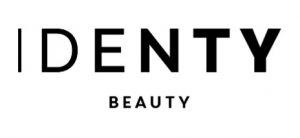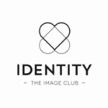BACKGROUND TO THE DISPUTE
On 6 June 2018, the appellant, Freshly Cosmetics, S. L., filed an application for registration of an EU trade mark at the European Union Intellectual Property Office (EUIPO). The trade mark in respect of which registration was sought is the following figurative sign:

The goods in respect of which registration was sought are in Class 3 of the Nice Agreement and correspond to the following description: ‘Make-up preparations; preparations for the care of the skin, eyes and nails; coloured cosmetics for the skin; make-up; sprays for fixing make-up’.
On 24 September of the same year, Mr Francisco Misiego Blázquez filed a notice of opposition against the registration of the trade mark applied for in respect of the services mentioned in the previous paragraph. The opposition was based on the following earlier Spanish figurative mark, registered on 25 March 2015 under number 3525733 for services in classes 35 and 44:

The ground relied on in support of the opposition was that referred to in Article 8(1)(b) of Regulation 2017/1001. On 27 November 2019, the Opposition Division upheld the opposition. On 27 January 2020, Freshly Cosmetics, SL filed an appeal against the EUIPO decision.
By decision of 11 September 2020, the Fourth Board of Appeal of EUIPO dismissed the appeal. It held that, having taken into account the relevant factors in the present case, it was appropriate to conclude that there was a likelihood of confusion between the marks at issue for a significant part of the Spanish public.
DECISION OF THE GENERAL COURT
The appellant submits that, while it accepts the Board of Appeal’s findings as regards the relevant public and the relevant territory, it does not, however, agree with the Board of Appeal’s conclusions as regards the comparison of the goods and services covered by the marks at issue, the comparison of the marks at issue, the assessment of the distinctive character of the earlier mark and the overall assessment of the likelihood of confusion between those marks.
The relevant public
The Board of Appeal considered that Spain was the territory in which the relevant public was established. As regards the goods covered by the mark applied for, it held that they were aimed at the general public and that, when purchasing them, the public would pay an average or even slightly above average degree of attention, given that personal care products may cause skin sensitivity or some kind of allergy. According to the Board of Appeal, the services of the earlier mark are aimed at a public made up of both the general public and professionals, who pay an average or even slightly above average level of attention when purchasing the services in question.
Comparison of the goods covered by the conflicting marks
The appellant, who disputes the Board of Appeal’s analysis, submits that the mark applied for designates goods intended for electronic commerce in make-up, whereas the earlier mark relates exclusively to personal image consultancy services, in Class 44, and not to services for the sale of cosmetic products, in Class 35. That is evidenced by the information on the intervener’s website, according to which the personal image consultancy services it provides or the online courses it offers do not involve the sale of its own make-up products, but those of a third party supplier, which has its own trade mark.
The question of use of the earlier mark and proof of such use was not relevant in the present case, since that mark had been registered less than five years before the date on which the application for registration of the mark applied for was filed, so that any request for proof of use of the mark for all the services which it designated should, in any event, have been rejected. Finally, the parties’ commercial strategy was irrelevant in so far as, in opposition proceedings, it is necessary to refer to the goods and services as described in the list of goods and services covered by the conflicting marks.
As regards the factor relating to the similarity of the goods and services covered by the marks at issue, it should be noted that all the goods covered by the mark applied for have an average degree of similarity with some of the services covered by the earlier mark, namely ‘retail and internet sales of cosmetic products’ in Class 35.
Comparison of the conflicting signs
As regards the factor relating to the similarity of the conflicting signs, the Court relies on the presence of the element ‘identity’ in the earlier mark and the element ‘identy’ in the mark applied for, which give rise to an average degree of similarity from a visual point of view, an average degree of similarity, or even greater than average, from a phonetic point of view and a certain degree of similarity, for a not inconsiderable part of the relevant public, from a conceptual point of view. Contrary to what the appellant maintains, the presence of the other elements of which the conflicting marks consist does not mitigate that assessment, in so far as those elements play a secondary and not very distinctive role in the perception of the signs as a whole, whether, in the earlier mark, it is the figurative element consisting of the graphic representation of two interconnected hearts or the word element ‘the imagen club’, or, in the mark applied for, the word element ‘beauty’.
The global assessment of the likelihood of confusion
Contrary to the appellant’s submission, the consideration of all the relevant factors in the comparison of the marks at issue does not rule out the possibility that the relevant public might consider that the goods and services at issue in the present case have the same commercial origin.
In the light of all the foregoing considerations, it must be held that the Board of Appeal was right to find that there was a likelihood of confusion. The action must therefore be dismissed in its entirety.
JUDGMENT OF THE GENERAL COURT (SECOND CHAMBER) OF 15 SEPTEMBER 2021. CASE T 688/20


 Español
Español Deutsch
Deutsch